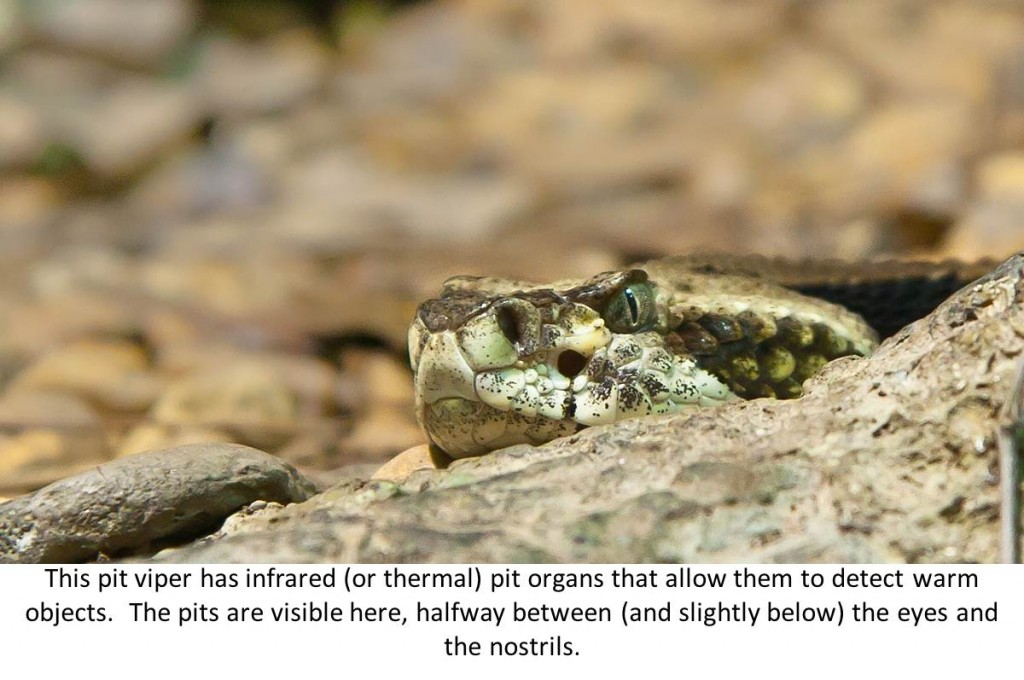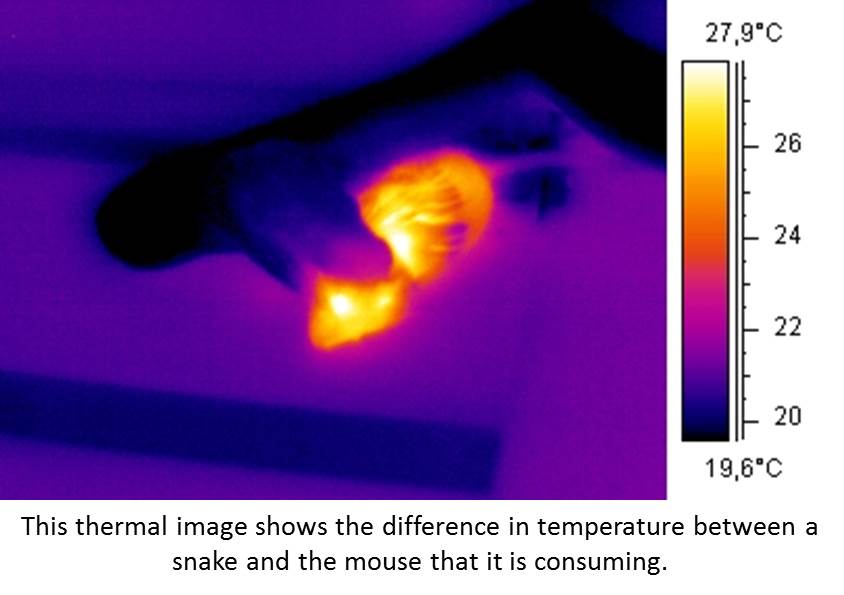Playing it cool helps rattlesnakes find prey – at least according to a recent paper in the Journal of Comparative Physiology A. Researchers from Brock University in Canada in collaboration with researchers in Brazil found that South American rattlesnakes (Crotalus durissus) can use respiration to actively cool their heads. These cooler animals were more accurate when striking prey, and were quicker to relocate and consume prey after a strike. But why does cooling down help the animals find prey?
Rattlesnakes belong to a group of animals called pit vipers. Snakes are ectothermic animals, which means that they cannot generate body heat through metabolic processes. Instead, they rely on their behavioral response to the environment to regulate their body temperatures. However, their prey are small endothermic mammals that generate their own body heat. The snakes have special sensory organs called facial pit organs that can sense the body heat of their prey. These organs allow the animals to accurately strike at prey, even when it is dark and they cannot use their vision.
Although it has been hotly debated, current research suggests that the membranes in these pits are sensing heat and not infrared light (e.g. not a photoreceptive organ). When the pits are heated ion channels called TRPA1 open, starting a cascade of information from the sensory system to the brain. When these pits are relatively cool, it provides more contrast between the temperature of the pit and the temperature of the prey and should, in theory, provide more accurate information to the snake about the location of the prey item. In many animals cooling is achieved by the evaporation of water (like panting in dogs, which is a form of respiratory cooling, or sweating in humans). The more humid the environment the less effective this evaporative cooling becomes, because the air is already saturated with water vapor. This means that liquid water is less likely to evaporate.
The research found that animals did indeed cool their heads relative to the rest of their body and that this cooling was more effective when humidity was low. This suggests that the environment plays a very important role in the functionality of these thermal detectors. The snakes may be more successful predators if they hunt from a location with lower humidity. This is a great example of how the environment and the sensory biology of animals interact to influence their behavior (sensory ecology!). If you want to learn more about this system you can check out the paper in the latest issue of the Journal of Comparative Physiology A.



